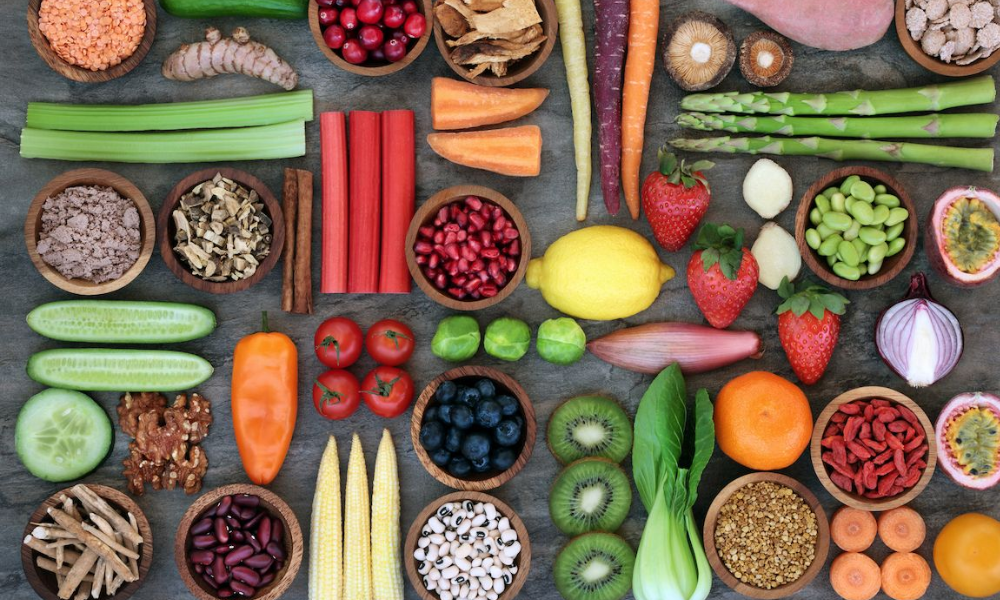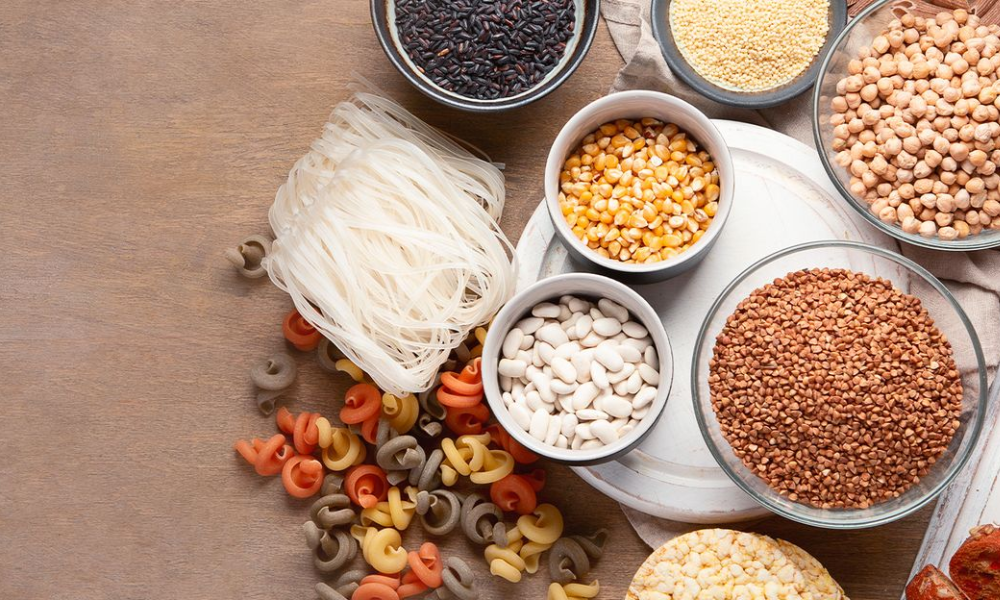Celiac disease is an autoimmune condition that mostly affects the small intestine. Celiac disease patients must adhere to a rigorous gluten-free diet to control their symptoms and maintain their health. Gluten is a protein present in wheat, barley, and rye that can be difficult to avoid due to its presence in many common meals and its use as a binding agent in many processed foods. However, adhering to a gluten-free diet can be difficult, especially if you are unfamiliar with the types of foods that are acceptable to consume.
This article will include a list of items that are safe to eat for persons with celiac disease, as well as gluten-free diet suggestions. If you or someone you know has celiac disease, this information will be extremely beneficial.
What Foods to Eat for Celiac Disease?
For those who have celiac disease, diet is the most effective treatment. People with celiac disease must take extra care to avoid gluten because even trace amounts can cause dangerous reactions.
While there is no cure for celiac disease, avoiding gluten can help control symptoms and prevent complications. People with celiac disease must work closely with a healthcare provider and a dietitian to ensure that their diet is nutritionally adequate and that any related health conditions are managed.
The foods to eat for celiac disease should be known to those with the condition or who are gluten intolerant. Before choosing which meals to eat, there are several factors to think about, such as figuring out whether items contain gluten and how to prevent cross-contamination.
What Foods May Celiacs have During Breakfast?
- Rice Chex, Corn Chex, or any other gluten-free cereal with milk, nut milk, and fresh fruit.
- Warm corn tortillas with scrambled eggs, diced tomato, and melted cheese.
- Rice cereal cream with chopped almonds and milk.
- Gluten-free waffles topped with butter and maple syrup.
- Two soft corn tortillas with an omelet with onions, peppers, and tomatoes.
- Grits with salt and butter.
- Fruit with cottage cheese.
- Gluten-free pancakes with butter and syrup (gluten-free brands include Arrowhead Mills, Bob’s Red Mill, and Gluten-free.
- Essentials, Gluten-free Pantry, Kinnikinnick, Sylvan, and Vans).
- Berry-layered gluten-free yogurt.
- Serve hard-boiled eggs with mayonnaise on toasted corn tortillas. Oatmeal with fruit that is gluten-free.
How to Adapt your Lifestyle to Deal with Celiac Disease?
If you have celiac disease, the only treatment is a gluten-free diet. For the rest of your life, you must stay away from gluten. The smallest amount can cause your small intestine harm because it will cause an immune system reaction. Consuming a gluten-free diet necessitates a change in eating habits.
Generally speaking, a gluten-free diet excludes most grains, pasta, cereals, and processed foods. They typically contain wheat, rye, and barley, which is the cause. You’ll have to learn how to decipher ingredient lists on the packaging.
Choose gluten-free options when shopping. You can still consume a wide variety of foods, such as meat, fish, rice, fruits, and vegetables, as well as prepared items labeled gluten-free as part of a well-balanced diet.
Organic and specialized food stores have long had gluten-free bread, pasta, and other items available. These days, almost all supermarket stores carry gluten-free goods. All types of eateries offer foods that are free of gluten.
How does a Gluten-Free Diet Enhances the Absorption of Nutrition?
Due to inadequate absorption in the damaged small intestine, nutrient shortages are common in celiac disease patients.
The most frequent nutritional deficiencies are those in iron, calcium, magnesium, zinc, niacin, riboflavin, folate, vitamin B12, and vitamins A, D, E, and K. In fact, one of the most noticeable symptoms of celiac disease in adults is unexplained iron deficiency anemia.
However, if a person has celiac disease and their intestines are still damaged and unable to absorb nutrients, taking supplements may not always be enough to make up for deficits.
Even without taking a supplement, eating a gluten-free diet has been demonstrated to repair the intestines sufficiently to treat iron deficiency anemia within six to twelve months.
What are the Best Gluten-Free Foods?
The celiac disease diet offers a variety of naturally gluten-free foods, such as:
- Beef, chicken, dairy products, eggs, game meat, lamb, hog, shellfish, and turkey are examples of animal proteins.
- Avocado, coconut oil, olives, oils, solid fats, and butter are among the oils and fats.
- Fresh, frozen, dry, or canned fruits and vegetables are acceptable.
- Amaranth, buckwheat, corn, millet, quinoa, rice, sorghum, teff, and wild rice are gluten-free cereals and pseudo cereals.
- Spices and herbs: You can use fresh and dried herbs and spices freely because they are all inherently gluten-free.
- Beans, lentils, peanuts, peas, and soy are legumes.
- Nuts and seeds, such as almonds, cashews, chia, flax, pecans, pepitas, pine nuts, and walnuts.
How to Identify Foods that Contain Gluten?
A crucial component of treating celiac disease recognizes foods that contain the protein gluten. The illness can result in malnutrition, infertility, osteoporosis, and cancer, in addition to several digestive problems.
Despite the fact that many foods are inherently gluten-free, certain processed goods do. Read labels thoroughly to steer clear of this kind of food.
Corn chips, flavored potato chips, and frozen yogurt bars are a few examples of popular places to find hidden gluten. These goods could include wheat extract, malt flavoring, or wheat starch.
Gluten is present in certain packaged convenience items such as bread, lunch meats, and sauces. Most of the time, these products pose little risk to those who have the disease.
However, if you have celiac disease, make sure to only consume foods that have received the gluten-free certification. Ask the manufacturer if you have any questions about the labeling of a product.
Food goods frequently contain gluten as a coloring or stabilizing component. Additionally, it’s a component of certain salad dressings and spice mixtures.
How to Stay Away from Contamination?
There are many things to do to prevent gluten cross-contamination, regardless of whether you have celiac disease. These include purchasing grains that are guaranteed to be gluten-free, storing your food in separate locations, and testing bread crumbs for gluten.
The components in your food and how it is packed are two of the most crucial factors. Wheat is a common ingredient in many goods and is sometimes used as a flavor or thickener. Additionally, it’s crucial to ensure that your favorite product is gluten-free by reading the label.
Ask the employees if there are any allergens and if they must purchase or eat food from a restaurant. Most eateries are eager to give you gluten-free meals and will make accommodations for your needs.
Consider carrying a “toaster bag” with you if you must eat at a friend’s house to avoid cross-contamination. This is particularly crucial if you’re traveling.
Utilizing a cutting board specifically for gluten-free dishes is another suggestion. By doing this, gluten crumbs won’t accumulate on your ordinary things.
Eliminating Lactose
It can be challenging to try to avoid lactose when eating for celiac disease. To identify foods that are secure for you to eat, there are a few factors to keep in mind.
First of all, it is very important for us to understand that lactose is a sugar found in milk. The majority of the time, it may be found in dairy products, which are a good source of calcium, vitamin D, and other vital nutrients.
Environmental exposures or lactase deficiency may be the cause of lactose intolerance. It is also conceivable for someone to have a milk allergy. An additional prevalent problem is an intolerance to gluten.
From gas and bloating to diarrhea, lactose intolerance symptoms can take many different forms. You can minimize your dairy intake and get relief from these symptoms by switching to a lactose-free diet.
Intolerant to lactose is a typical sign of celiac disease. The small intestine is injured in this situation, making lactose absorption difficult. Malnutrition, nutritional deficits, and even cancer might result from this.
Conclusion
If you have celiac disease, you must adhere to a strict gluten-free diet in order to manage your symptoms and avoid complications. This includes avoiding all gluten sources in your diet, such as wheat, barley, and rye.
It is also critical to read food labels carefully and look for the “gluten-free” label to ensure that products do not contain gluten. Bread, pasta, cereals, baked goods, and processed foods may contain gluten, so it is critical to choose gluten-free alternatives or avoid these foods entirely.
Following a gluten-free diet can be difficult at first, but it becomes easier with time and practice and can help improve your symptoms and overall health. It is critical to collaborate with a healthcare provider and a dietitian to ensure that your diet is nutritionally adequate and that any related health conditions are managed.


